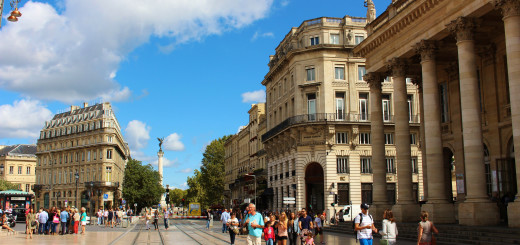The Politics of Fashion: A Global Journey

Recently I visited The Politics of Fashion | Fashion of Politics, an intimate exhibit guest curated by Jeanne Beker at the Design Exchange in Toronto. With pieces from designers such as Alexander McQueen and Vivienne Westwood, the exhibit displayed some of the most politically significant pieces, collections and trendsetters of the fashion world from the mid-20th century to now.
From the U.S. and Canada to countries in Europe and Asia, runways the world over have not just reflected but often announced the births, deaths and paradigm shifts of our cultural, political and social lives. Stretching the gamut from women’s rights to religion, fashion remains a global force for voicing our similarities and differences.
1960s London

Coined by fashion editor Diana Vreeland in 1965, the term ‘Youthquake’ described the 60s fashion, music and culture among England’s teenage population. During this time, British designer Mary Quant revived the miniskirt which went on to become a “weapon of sexual revolution” during a time of advancements in birth control as well as the beginnings of the feminist movement. Credit: Nicola Brown
1970s Italy

Diesel originated in Italy in the 1970s, where it soon became known for its controversial advertisements and cult denimwear. The name Diesel was chosen with a global picture in mind, as “it’s one of the few words pronounced the same in every language,” (Diesel President Renzo Rosso). Today, Diesel is a global brand that continues to push the envelope through their design and provocative advertisements. Credit: Nicola Brown
1980s Japan

In the 1980s, Japanese designers such as Rei Kawakubo, Issey Miyake and Yohji Yamamoto revealed avant-garde designs that spoke to Japanese social and popular culture (e.g. the “Godzilla Dress”, second from the end). These designs had a huge impact, as they interrupted and challenged the status quo of European fashion at the time. Credit: Caitlin Boros
2000s Global

Founded in the Ukraine in 2008, Femen is a radical feminist movement with chapters in Turkey, Mexico, Brazil, Japan, France, and Canada. A non-violent group, the women of Femen use their naked bodies to fight religious institutions, dictatorships, and the sex industry. Credit: Nicola Brown
Expression Around the Globe
With it’s influential global resonance, fashion continues to shape and support political and cultural movements. Thanks to rebellious designers of the past, unafraid to use their art as a voice for advocacy and change, fashion maintains its foothold as a form of expression that can truly make an impact.
To see the world through the eyes of fashion is to participate in an intimate and subtle conversation that digs deeper into the world’s issues than even the most plunging necklines would suggest at a cursory glance.
For information on this exhibit and upcoming exhibits at the Design Exchange, visit: www.dx.org.
On this trip: Tickets provided by Design Exchange.
Latest posts by Caitlin Boros (see all)
- 48 Hours In: Banff, Alberta - March 6, 2018
- Top 5 Sights in Spain’s Historic Seville - February 27, 2018
- Explore the World’s 4 Remaining Inhabited Bridges - January 16, 2018












 Almost all the tea houses in
Almost all the tea houses in 











